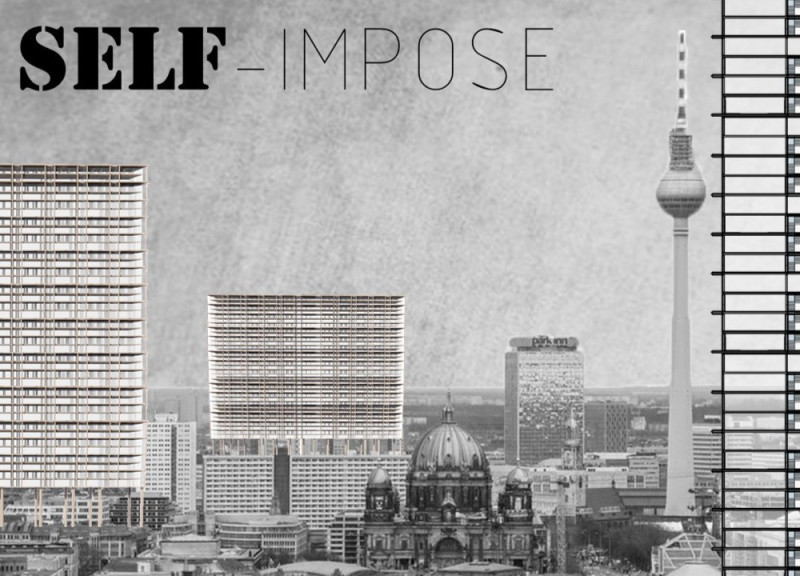5 key facts about this project
The adaptive nature of this project is reflected through its modular components, which facilitate versatility in use and configuration. This approach aligns with contemporary urban strategies that prioritize density, flexibility, and engagement with the public realm. The building’s slender profile and vertical emphasis connect with the historical fabric of Berlin, respecting both scale and character while introducing a fresh architectural language.
Integration of Modular Components
One of the notable features of "Self-Impose" is its modular design. The building's facade incorporates adjustable elements that allow for reconfiguration to meet changing functional demands. This aspect not only enhances the building's utility but also contributes to sustainable principles by reducing waste and prolonging the life of the structure. The modularity is expressed through a series of prefabricated units that streamline construction processes while providing aesthetic cohesion.
The use of glass facades is particularly relevant in this design, creating an open and transparent atmosphere that invites interaction with its surroundings. This material choice promotes natural lighting within the building and fosters a visual connection between the interior spaces and the urban landscape. The open spaces encourage communal activities and provide areas for social interaction, appealing to residents and visitors alike.
Sustainable Design Strategies
"Self-Impose" exemplifies contemporary sustainable design through its incorporation of green roof systems and the employment of eco-friendly materials. The green roofs serve not only as a recreational area but also contribute to urban biodiversity, aid in insulation, and manage stormwater. These design choices reflect an understanding of the importance of environmental stewardship in architectural practice.
Furthermore, the project employs reinforced concrete and steel frames in its structural system, ensuring durability while allowing for expansive and flexible interior layouts. The careful selection of materials and construction practices highlights the potential for reducing environmental impact, addressing contemporary sustainability challenges.
For those interested in the architectural details of "Self-Impose,” exploring the architectural plans, architectural sections, and architectural designs can provide valuable insights into the project’s innovative approaches. The careful integration of various design ideas showcases how architecture can effectively respond to urban needs, creating a functional and aesthetic contribution to Berlin’s architectural landscape.























